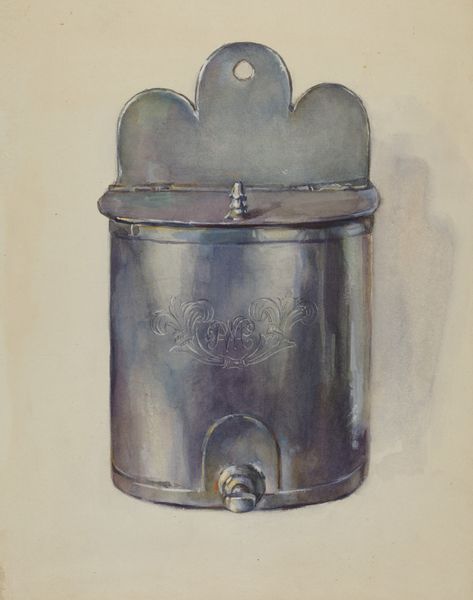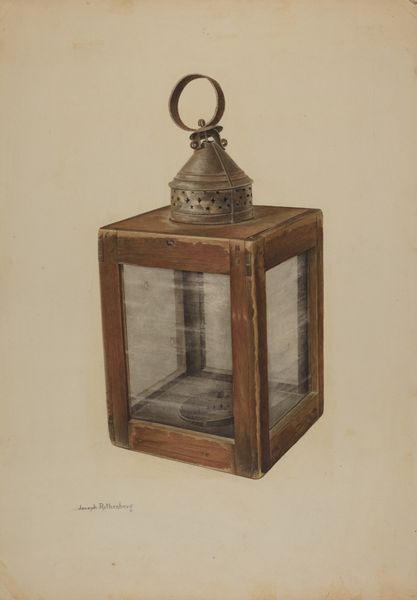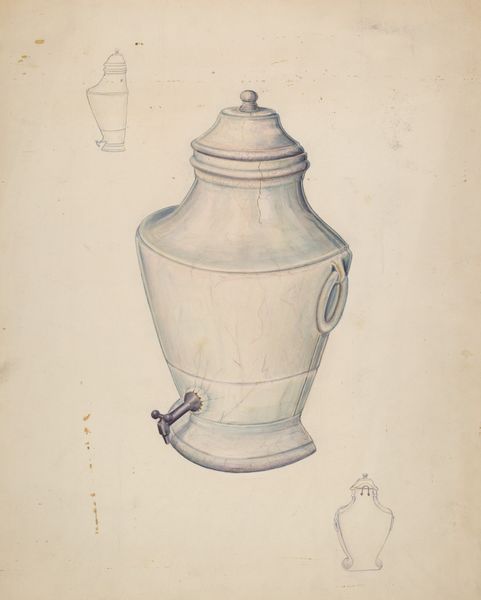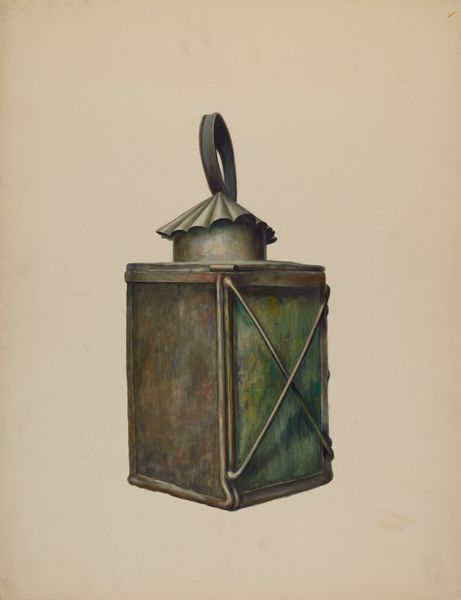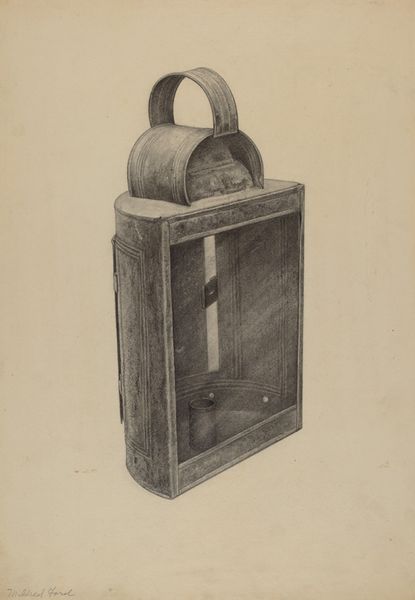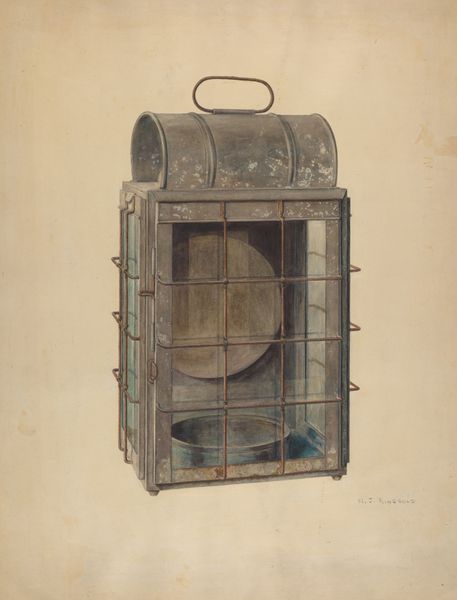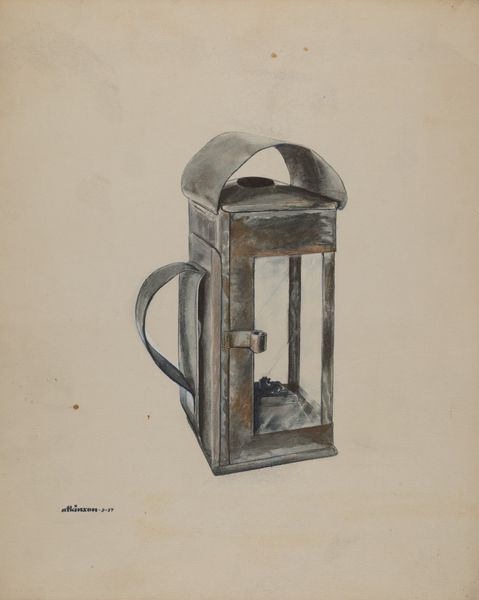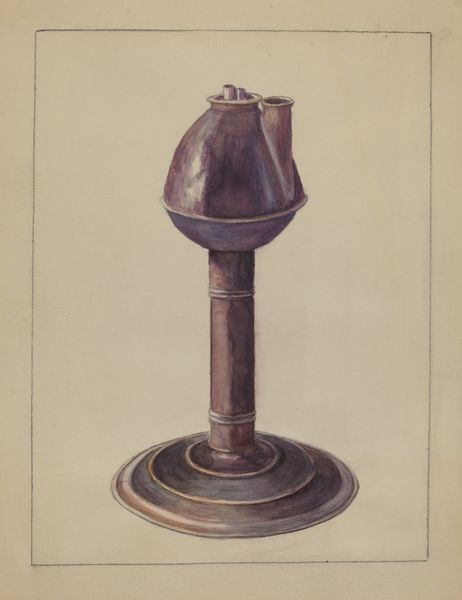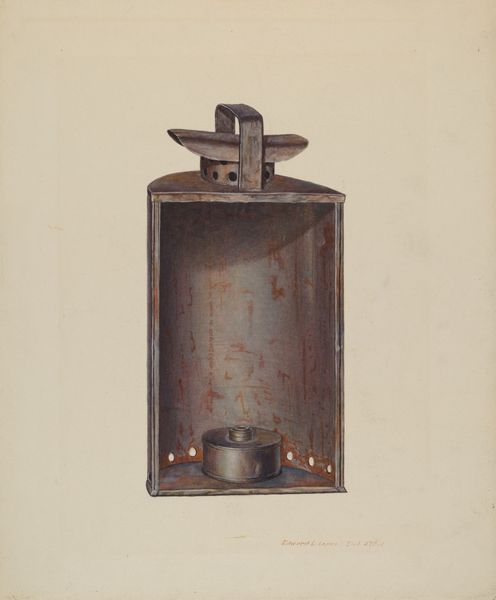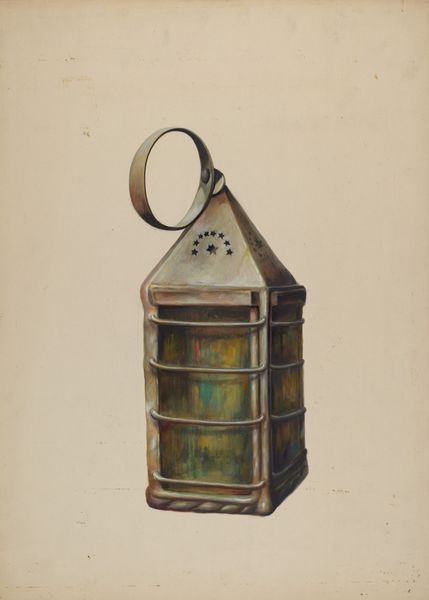
drawing, watercolor
#
drawing
#
charcoal drawing
#
watercolor
#
coloured pencil
#
watercolour illustration
#
realism
Dimensions: overall: 45.7 x 35.7 cm (18 x 14 1/16 in.) Original IAD Object: 7 3/4" high; 5" wide; 2 1/2" in diameter
Copyright: National Gallery of Art: CC0 1.0
Editor: Here we have Samuel Philpot’s "Ship Lantern," circa 1939, a drawing rendered with watercolor and colored pencil. The detailed rendering almost makes it seem photorealistic, and I’m drawn to the way the light catches the metallic surfaces. How do you interpret the formal aspects of this piece? Curator: Indeed, Philpot's acute attention to surface texture and light creates a compelling study in form. Note how the artist manipulates value and color to convey the lantern’s three-dimensional presence. The strategic application of light suggests an exploration of form. Consider, too, the geometrical structure: the layering of rectangles that make up the bulk of the object. Is the emphasis solely on mimesis, or do you detect something further? Editor: Well, I initially just saw the realistic depiction. But now I notice how he breaks it down to fundamental geometric forms and textures. It’s more than just the object itself; it’s the study of its visual construction. Curator: Precisely. Focus on the construction of the object itself, rather than external narrative elements. We might also consider the subtle variations in color and tone across the object. Do you find any symbolic dimension, or is it primarily concerned with formal relations? Editor: I think it’s formal. I am beginning to notice more now the artist seems preoccupied with form, and exploring that geometric nature, over anything else. Curator: Precisely. And the texture adds a very tactile quality, drawing us into the forms themselves, I wonder if it encourages the eye to see the essence of the piece within its structured composition? Editor: I’ve definitely gained a new perspective on how formal analysis can reveal deeper meaning within an artwork. Curator: Indeed. Sometimes, the beauty of art resides within the pure visual components and their arrangements.
Comments
No comments
Be the first to comment and join the conversation on the ultimate creative platform.

